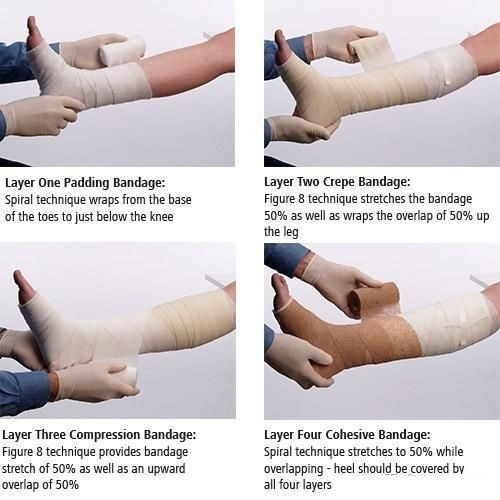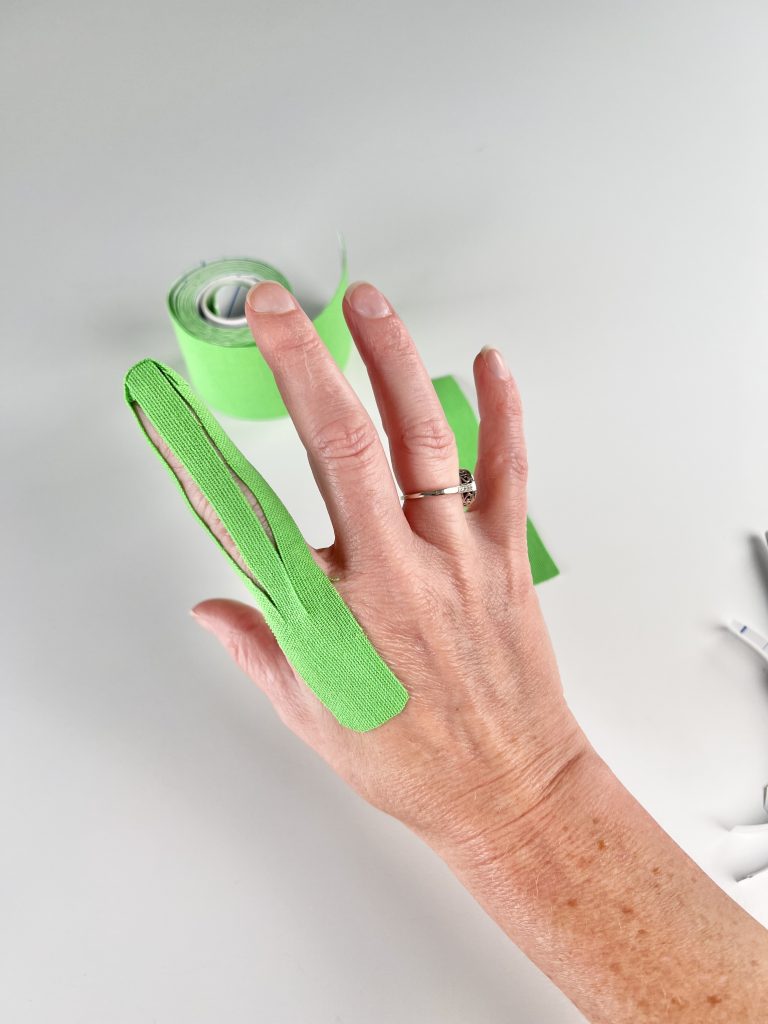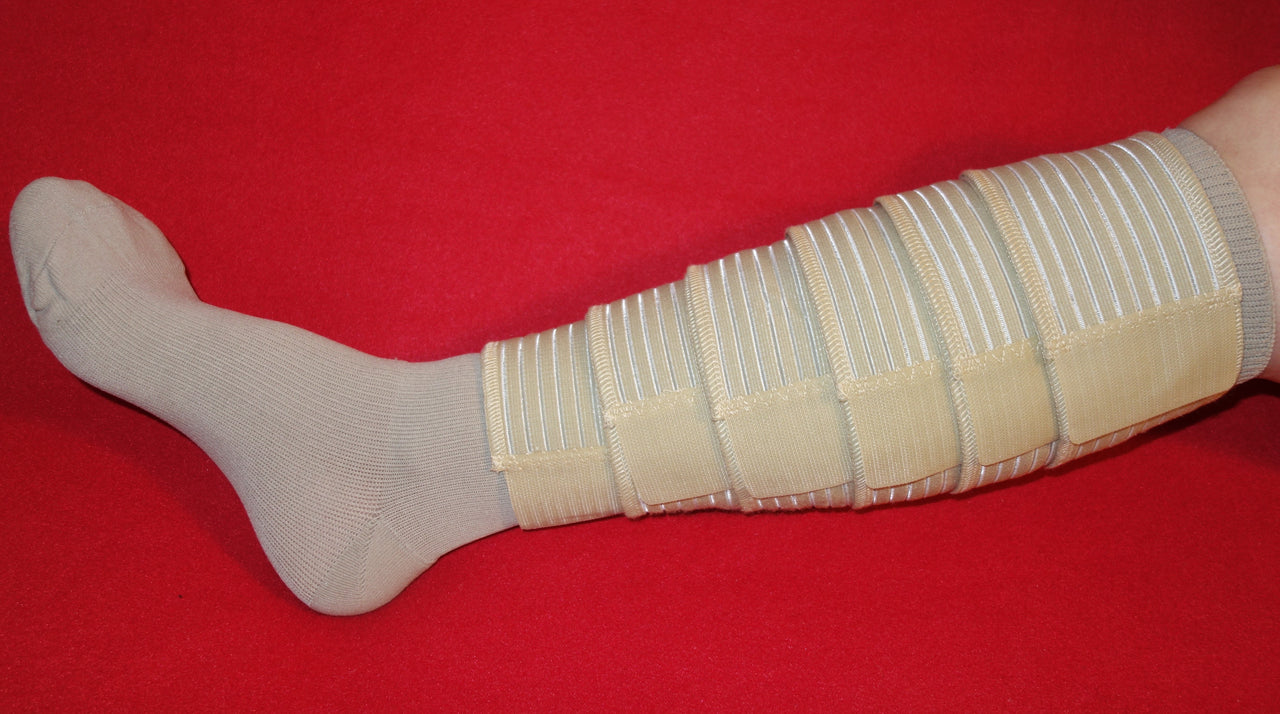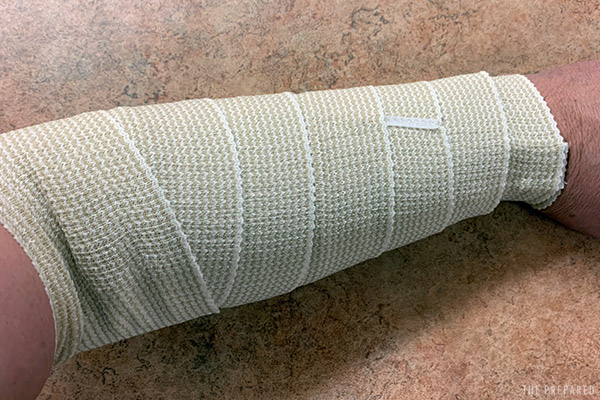How To Reduce Swelling From Tight Bandage
:max_bytes(150000):strip_icc()/elastic-bandages-1298333_v2-5c5d0649c9e77c00010a4825.png)
A bandage meant to heal can quickly become a source of discomfort and even danger when applied too tightly. Swelling, pain, and impaired circulation are just some of the potential consequences. Understanding how to address this common issue is critical for preventing further complications and ensuring proper healing.
This article provides a comprehensive guide on how to reduce swelling caused by a tight bandage. We will explore practical steps, underlying causes, and crucial warning signs that warrant immediate medical attention, drawing on expert advice and established medical knowledge.
Recognizing the Signs of a Tight Bandage
The first step in addressing swelling from a tight bandage is identifying the problem. Several signs indicate that a bandage is too constrictive. Prompt recognition can prevent the progression of complications.
Pain is often the initial indicator. The pain may be throbbing, constant, or worsen with movement. Increased swelling below the bandage is another telltale sign.
Look for changes in skin color, such as paleness, blueness (cyanosis), or redness. Numbness, tingling, or a pins-and-needles sensation can indicate nerve compression due to the tight bandage. Difficulty moving fingers or toes also warrants concern.
Immediate Steps to Take
If you suspect your bandage is too tight, take action immediately. Your initial response is crucial. Don't delay seeking help if you're unsure or symptoms worsen.
First, loosen the bandage. Carefully unwrap or cut the bandage, but do not remove it completely. Keep the injured area supported while loosening the bandage.
Elevate the affected limb above the heart. This promotes drainage of fluid and reduces swelling. Apply ice packs wrapped in a cloth to the area for 15-20 minutes at a time.
Continue to monitor the symptoms closely. If the symptoms improve within a short period (e.g., 30 minutes to an hour) after loosening the bandage, you may be able to manage the situation at home.
When to Seek Medical Attention
Not all cases of swelling from a tight bandage can be managed at home. Knowing when to seek professional medical help is paramount. Certain symptoms necessitate immediate medical evaluation.
If pain is severe or unrelenting despite loosening the bandage, seek immediate medical attention. Persistent numbness or tingling should also prompt a visit to the doctor. Changes in skin color that do not improve rapidly after loosening the bandage require immediate assessment.
Signs of infection, such as fever, chills, increased redness, warmth, or pus drainage around the wound, warrant immediate medical care. Any concerns about impaired circulation or nerve damage should be addressed by a healthcare professional as soon as possible.
Preventing Tight Bandages
Prevention is always better than cure. Avoiding tight bandages in the first place can save considerable discomfort and potential complications. Proper bandaging technique is key.
When applying a bandage, ensure it is snug but not constricting. Use elastic bandages designed for compression, but avoid over-tightening. Overlap each layer of the bandage by about half its width.
Pay attention to how the bandage feels as you apply it. Ask the person being bandaged to provide feedback. Check for signs of constriction regularly after applying the bandage. The University of Michigan Health recommends ensuring you can easily slip a finger between the bandage and the skin.
Understanding Underlying Causes of Swelling
Swelling, also known as edema, is the accumulation of fluid in body tissues. Several factors contribute to swelling associated with tight bandages. Understanding these factors can help in managing the issue effectively.
A tight bandage restricts blood flow, hindering the removal of fluid from the affected area. This leads to fluid buildup and increased swelling. Compression can also damage small blood vessels, further exacerbating the problem.
The inflammatory response to an injury can also contribute to swelling. Even with a properly applied bandage, some degree of swelling is normal. A too-tight bandage amplifies the inflammatory process and compromises the body's natural healing mechanisms.
Expert Opinions and Guidelines
Several reputable organizations and medical experts provide guidance on managing swelling and bandaging techniques. Adhering to established guidelines can ensure patient safety and promote effective healing. Resources available from organizations like the American Red Cross offer detailed bandaging instructions.
Dr. Emily Carter, an orthopedic surgeon, emphasizes the importance of patient education. "Patients need to understand the signs of a too-tight bandage and know when to seek help," she states. She also recommends using proper bandaging techniques and regularly monitoring for complications.
The Mayo Clinic advises that if you are unsure about how to apply a bandage correctly, consult a healthcare professional for guidance. They also stress that compression bandages should not be used on individuals with certain underlying medical conditions, such as peripheral artery disease, without consulting a doctor.
Long-Term Considerations
While addressing immediate swelling from a tight bandage is critical, long-term management is equally important. Ensuring proper healing and preventing recurrence are crucial for optimal outcomes. Regular monitoring is essential.
Follow up with a healthcare professional as recommended. Continue to elevate the limb and use ice packs as needed. Consider using compression stockings or sleeves after the initial swelling has subsided to help prevent future swelling.
If the underlying injury requires ongoing treatment, adhere to the prescribed plan. Physical therapy, medication, or other interventions may be necessary. Staying proactive and vigilant can prevent long-term complications.
Conclusion
Swelling caused by a tight bandage is a common yet potentially serious issue. Prompt recognition, appropriate action, and awareness of warning signs are essential for preventing complications. By following the guidelines outlined in this article, individuals can effectively manage swelling and promote optimal healing. Always remember, when in doubt, seek professional medical advice.


















